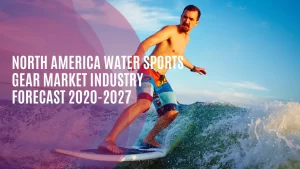When trying to learn to surf it can be hard to understand all of the new information. Selecting the best wetsuit, surfboard, or even location can be very overwhelming. You may have thought the task of buying a board was the hardest decision when purchasing your surfing gear.
Now that you know that having a wetsuit is just as important of a component in having a successful surf experience, it is time to dive in. We have broken down the 5 key components of what to consider when buying a wetsuit to make your shopping experience stress-free.
Thickness
The most important of all of the components of what to consider when buying a wetsuit is thickness. The first component of thickness you need to understand is every wetsuit is associated with two numbers.
The material, made out of neoprene, is measured in millimeters. The first number is the thickness along the body portion of the wetsuit and the second number is the thickness along the arms and legs.
A 4/3 wetsuit, for example, would be 4 millimeters along the body and 3 millimeters along the limbs. The reason for the two thicknesses is to keep the body warm around your core, but allow flexibility in the limbs. Generally, a 3/2 wetsuit is suited for surfers.
Zipper
Not many people think of the zipper as being an integral component of what to consider when buying a wetsuit. However, the zipper helps the wearer get into and out of the the wetsuit. The zippers length affects how easy it is to get in and out of the wetsuit. The longer the length, the easier it is to get the wetsuit on and off.
The trade off is the zipper is more flush to the body. Wetsuits made for winters, which are also more thick then usual wetsuits, have special short zippers. We recommend finding a wetsuit with the shortest zipper, but allows for easy access.
Most zippers are traditionally placed on the back for easy entry. This feature was also placed on the back, to allow the wearer to not have to lay uncomfortably on the zipper.
The new chest zippers allow for flexibility in the back and is more water tight. The new neoprene material has allowed more and more wetsuit to have the option of the chest zipper. The main drawback for chest zippers is that it is harder to get into.
Material
Most wetsuits are made of a material called neoprene. This waterproof material is one of the most light-weight options that allow for surfers to stay warm in the water without being weighed down. The higher the grade of neoprene, the warmer it will keep your body.
The goal with neoprene wetsuits is to have the thinest amount while staying warm. Other materials have mostly been phased out because they are either too heavy, or they do not keep the wearer dry. Find the wetsuit that feels the best for your skin.
Comfortability should be a high priority of what to consider when buying a wetsuit, because you will be spending a lot of time wearing it.
Sealed vs Unsealed
When wetsuits were first made, most were unsealed. Today, generally speaking, only the low-cost wetsuits are unsealed. But, what does this mean? The wetsuit is stitched together and then glued at the seam to decrease the amount of water entering the suit. This making the suit “sealed”.
In higher-end wetsuits, there is tape that is placed along the inside seem for added protection from the water. The main reason we recommend sealed wetsuits is because it keeps your body less exposed to the cold waters. This allows your core body temperature to stay higher for longer time in the water.
Style/Type
While researching what to consider when buying a wetsuit, you probably saw various wetsuit types with various lengths. They are made to adapt to various needs of a surfer and wide-ranging water temperatures. Most are broken down into three main types, shorty, full suit and the spring suit.
The shorty wetsuit is exactly what is sounds like. The neoprene covers a smaller part of the body, only the core and upper parts of the limbs. The full suit extends the neoprene material to the wrists and ankles. For some wetsuit the head is also covered when a hood is already attached. Spring suits have the biggest variation.
They can have longer legs with shorter arm coverage and vice versa. The spring wetsuits are great for people that may get colder in one area over another, or want more flexibility in one area. This is a decision that we leave up to you. Select the best option for you to have successful surfing experiences.
These 5 key components of what to consider when buying a wetsuit allow for you to make the best decision when selecting a wetsuit. Above all, make sure you are comfortable with your wetsuit, after all you are the one who is wearing it. Hope to see you riding a wave in your new wetsuit very soon.




